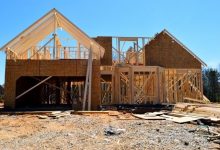Sustainable development advocates have described the federal government’s nearly $700 million building stimulus package as a “wasted opportunity” to push for basic energy and thermal efficiency measures that could slash both household living costs and construction sector emissions at the same time.
The Morrison government on Thursday confirmed plans to give the residential building sector an around $688 million economic boost as part of a range of post-Covid recovery measures.
The HomeBuilder program will offer $25,000 grants to owner-occupiers for either substantial renovations or the construction of new homes, for projects costing anywhere between $150,000 and $750,000.
The grants will be means-tested to exclude households with a combined income of more than $200,000 per year, or individuals making more than $125,000 per year, while the house being subsidised must be valued at less than $1.5 million.
Prime Minister Scott Morrison has couched the HomeBuilder scheme as a boost to jobs in the sector, at a time of economic and employment uncertainty.
“This is about targeted taxpayer support for a limited time using existing systems to ensure the money gets used how it should by families looking for that bit of extra help to make significant investments themselves,” he said.
“If you’ve been putting off that renovation or new build, the extra $25,000 we’re putting on the table, along with record-low interest rates, means now’s the time to get started.”
But industry observers and sustainability experts say the government has once again missed a much broader opportunity to boost the shift to a more sustainable building industry and to deliver long-term savings to Australian consumers through more energy-efficient homes.
“It is a wasted opportunity for any building industry stimulus not to be linked to improving quality and sustainability outcomes for households,” said Trivess Moore, a senior lecturer in construction at RMIT and member of the Sustainable Building Innovation Laboratory.
“In addition, the renovation grant is a missed opportunity to capture those households who could undertake cost-effective energy retrofit activities which would not only cost significantly less than the $150,000 minimum but provide greater liveability, health and wellbeing outcomes to a larger range of households,” Moore said.
“This could be attached to a requirement to have a sustainability assessment undertaken by a qualified assessor to ensure that energy efficiency retrofit activities delivered best bang for buck.
“I personally think the new home grant should require people to deliver to at least a 7-star performance outcome. The additional money would more than cover any additional costs,” he added.
A recent study by Moore and his team at RMIT found that for Victorian homes designed to a minimum of 7.5 stars, the energy required for heating and cooling amounted to 40 per cent less over the course of one year than for a 6-star house – the current standard under the Nationwide House Energy Rating Scheme (or NatHERS).
“What we found in the interviews with households is that they were using their air conditioning systems (much) less… turning them on only on a handful of occasions across summer and winter as they felt the homes performed well enough with some active thermal comfort actions such as opening and closing blinds and windows,” the report says.
The study highlighted numerous benefits of this improved thermal efficiency performance, starting with the reduced energy costs that result from such a significant reduction in energy used to maintain thermal comfort.
A second benefit is that these homes spend a greater percentage of the time in the healthy temperature range (without the need for mechanical heating and cooling), which had the potential to improve health outcomes for occupants.
Thirdly, if there is a blackout, the homes can still maintain thermal comfort for an extended period of time. And finally, it means the homes can use smaller heating and cooling appliances (or remove them altogether) reducing capital, maintenance and replacement costs over the life of the home.
In Europe, where thermal and energy efficacy standards for buildings are already considered to be 10-15 years ahead of Australia, the green Covid recovery plan unveiled by the European Commission last week aims to further drive the greening of the Continent’s building stock.
The plan proposes to spend €91 billion a year on green incentives like low-interest loans to drive sustainable building initiatives, including renewable heating systems, rooftop solar, batteries, and other smart energy and energy efficiency measures.
Australia’s Energy Efficiency Council said earlier this week that it had engaged early and with a very broad group of stakeholders, including the Building Council Australia and ACOSS, to ask governments to focus on energy efficiency in their post-Covid economic recovery plans.
“Government funding to improve homes could deliver a huge benefit to Australia, but only if it’s done in the right way,” said EEC head of policy Rob Murray-Leach in comments on Tuesday.
“Most Australian houses leak like tents – they’re cold in winter, hot in summer and a real threat to Australian’s health. Sydney has twice the rate of deaths caused by cold weather as Stockholm in Sweden. That is a national shame, but we can easily fix it.
“Improving the energy efficiency of homes through draught-sealing, insulation and heat-pumps for heating, cooling and hot water will deliver major ongoing economic benefits, reduce households’ energy bills, dramatically cut greenhouse emissions and improve health,” Murray-Leach said.
RenewEconomy and its sister sites One Step Off The Grid and The Driven will continue to publish throughout the Covid-19 crisis, posting good news about technology and project development, and holding government, regulators and business to account. But as the conference market evaporates, and some advertisers pull in their budgets, readers can help by making a voluntary donation here to help ensure we can continue to offer the service free of charge and to as wide an audience as possible. Thank you for your support.








